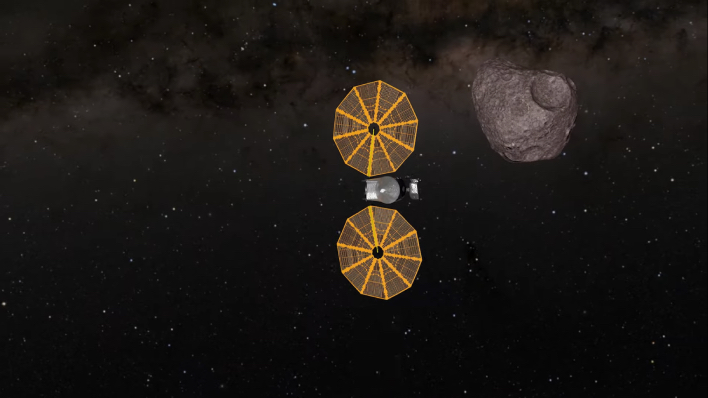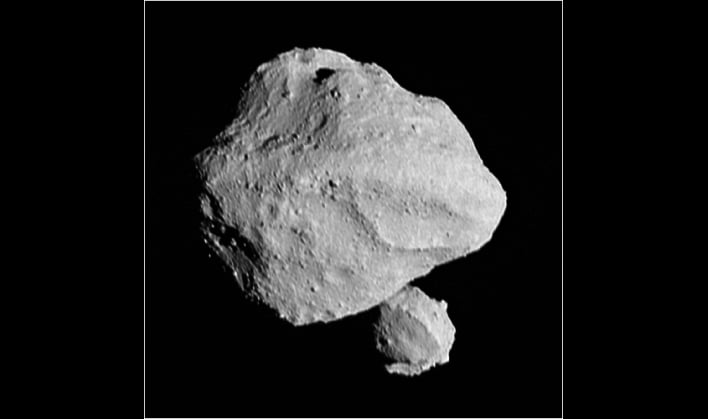NASA's Lucy Probe Calls An Audible And Rushes A Dark And Mysterious Asteroid

According to NASA, the encounter was the first time that Lucy got a close look at an object that, up to this point, had only been an unresolved smudge in the best telescopes. The probe’s primary mission is to survey the Jupiter Trojan asteroids, a never-before-explored population of small bodies that follow Jupiter’s orbit of the Sun. The aim of Lucy’s team back on Earth with the flyby of Dinkinesh is to test the probe’s terminal-tracking system that will allow the spacecraft to autonomously pinpoint the location of the asteroid. The spacecraft launched on October 16, 2021.
The space agency reported that Lucy made its flyby yesterday and successfully phoned home after its encounter. Based on the information the team received, they determined that Lucy is in good health and has given it commands to start downlinking the data collected during the encounter.
According to Hal Levison, principal investigator for the Lucy mission, the flyby was not originally in NASA's plans. However, once NASA's team of engineers discovered that it the asteroid was going to be in Lucy's path as it headed deeper into space, they decided to take a closer look at the mysterious rock.
"We expected it to just be a boring old rock in the inner part of the solar system," Levison, a planetary scientist with the Southwest Research Institute in Boulder, Colorado, told 9News. "But there's definitely a mystery going on here, it's not behaving like anything we've ever seen before."
Hello Lucy! The spacecraft phoned home and is healthy. Now, the engineers will command Lucy to send science data from the Dinkinesh encounter to Earth. This data downlink will take several days. Thanks for following along today and stay tuned!https://t.co/sFLJS7nRJz pic.twitter.com/P7XpcM4Ks8
— NASA Solar System (@NASASolarSystem) November 1, 2023
“We’ll know what the spacecraft should be doing at all times, but Lucy is so far away it takes about 30 minutes for radio signals to travel between the spacecraft and Earth, so we can’t command an asteroid encounter interactively,” explained Mark Effertz, Lucy Chief Engineer at Lockheed Martin Space. “Instead, we pre-program all the science observations.”
Lucy is continuing its orbital path around the Sun and will return to Earth’s vicinity for its second gravity assist in December 2024. This push will send the spacecraft back to the main asteroid belt for its 2025 Donaldjohanson flyby and then on to the Jupiter Trojan asteroids in 2027.
**Update 11/2/2023 5:25pm ET: NASA reported on X that asteroid DInkinesh is actually a binary pair of asteroids. The discovery was made following Lucy's flyby on November 1, 2023.


